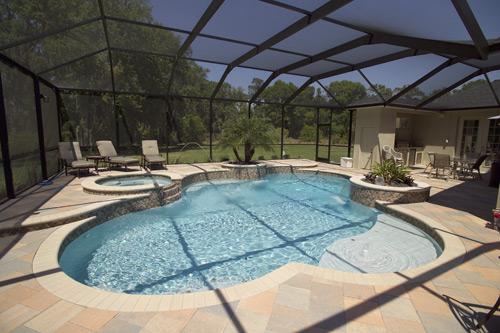
I could have booted from a USB stick and then used four drives, but I wanted to speed up both the installation time and boot time.Ī RAID-5 requires 3 or more physical drives. I then used the rest for a RAID-5 (RAID-Z in ZFS) with just three hard drives. The computer I used has only 4 SATA-II connectors and I decided to use one for the boot device itself. I used old and cheap hardware suitable for a home-lab. I managed to get a long with all the systems using only their respective man pages even though I think the Btrfs documentation could benefit a lot by using some examples. I therefore decided to put up a simple home-test environment with bare metal and throw some simulated problems against both ZFS and Btrfs and then try to deal with the problems in an as-identical-as-possible manner on both systems.
#INTEGRITY PLUS POOL REPAIR CODE#
I have since looked through the Btrfs source code and commit logs and Btrfs has received many fixes and improvements - especially during the last couple of years. File transfers where slow and a situation did occur where I lost some files. I have more experience using ZFS, and the last time I tested Btrfs, it was not performing well.
#INTEGRITY PLUS POOL REPAIR VERIFICATION#
In any case, ZFS and Btrfs are both very amazing open source data integrity verification filesystems. Yes, we really need to test our solutions throughly :) Do I need to automate some of the procedures?.Do I need to backup everything or can I perhaps split data into important and non-important categories?.Do I need running data integrity verification?.What if my backup solution breaks during restoration? Do I need multiple backup solutions?.If I do have backup in place, will my backup suffice? Is it recent enough? Is it secure enough?.If my system breaks down right now do I have adequate measures in place or will I lose important data?.If we never "battle test" our solution, we have no real idea how it's going to handle a breakdown. Whenever we use any kind of precautionary measures against data corruption, such as backup and/or filesystem data integrity verification, we need to test our setup with at least some simulated failures before we implement a solution. Please forgive any short comings, missing parts, and mistakes in my attempt to make this write up. I have used the word "pool" from the world of ZFS and Btrfs whenever I am dealing with the RAID-5 array. I also tested mirror (RAID-1) setups, but due to the length of the article I later decided not to include those. My main interest was to see how the different systems would handle multiple breakdown situations in a RAID-5 setup. I have repeated many of the tests more than once, but did not document everything as the results where very similar. I did my tests on and off during the course of about a week, but I have tried to be consistent. Let me start by saying that this is a simple write up and it wasn't originally intended to be anything but some personal notes which I then decided to share.



 0 kommentar(er)
0 kommentar(er)
